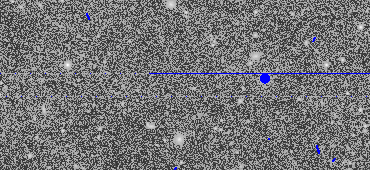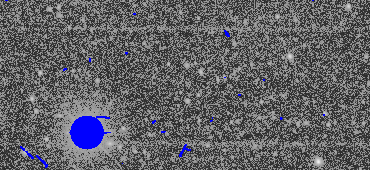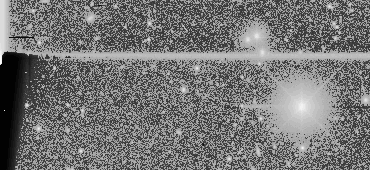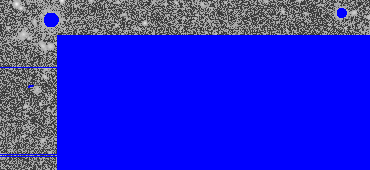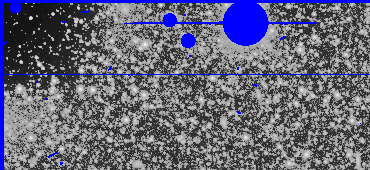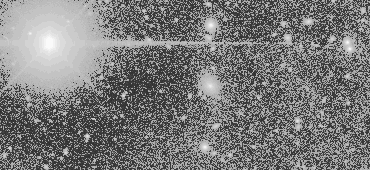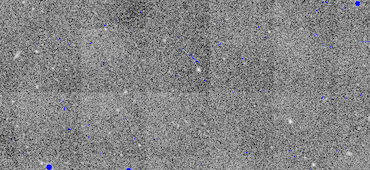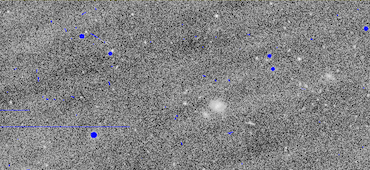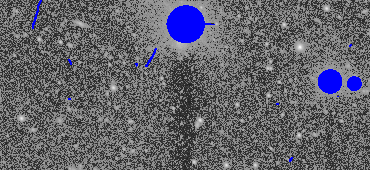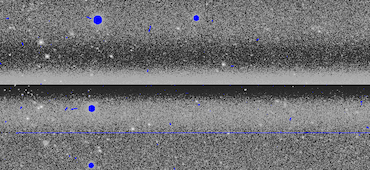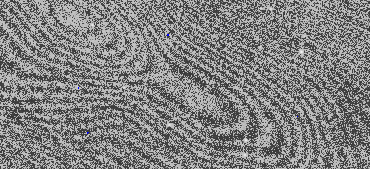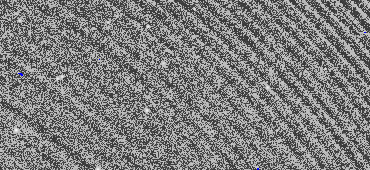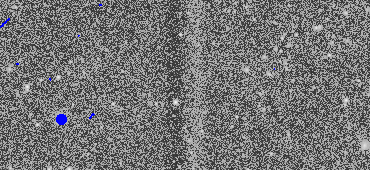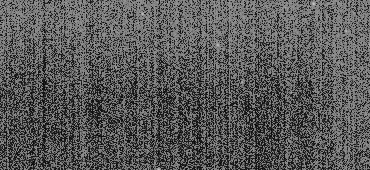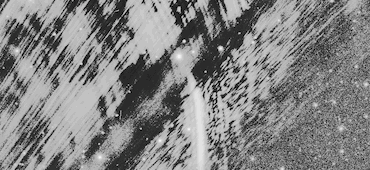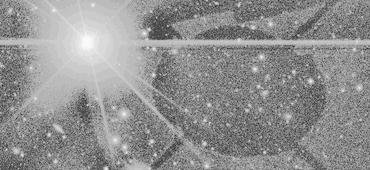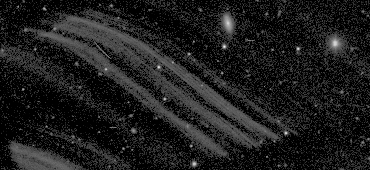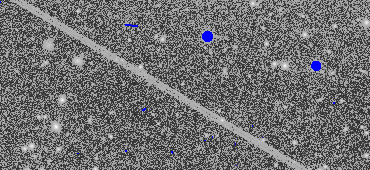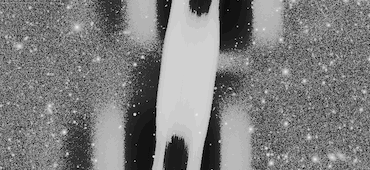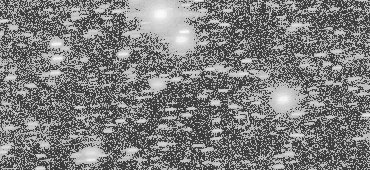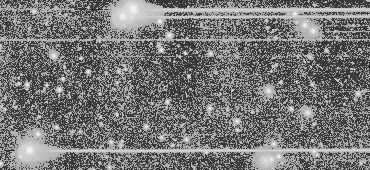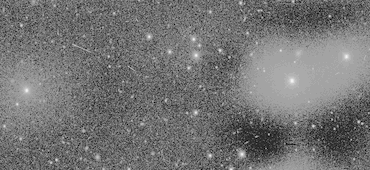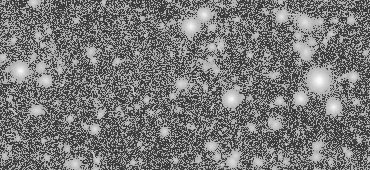The Viewer displays an image from a single DECam CCD for you to inspect. Initally we show you two primary buttons:
If there are no obvious issues with the image displayed, simply press Next. Otherwise, click the Problem button and select one of the predefined problem categories. Click on the problematic location(s) to mark the image.
In the course of marking problem regions, two new buttons will appear:
With the False button, you can report a non-existent problem that has been falsely flagged by DESDM, e.g. a mask that covers an area that appears totally fine. From the shape of the mask you can often guess which problem was mistakenly masked. If so, chose the appropriate category and click on this button to report it. When you click on the image, a mark will appear to indicate that you are reporting a false positive. After you've marked the first problem, another button Clear Last will appear to let you undo your mark(s). Once you are done marking all problems, click Next to submit the problems and advance to the next image.
Additionally, we give you the means to further investigate the single CCD image using these buttons:
The Info button opens a menu with a link to the image you are currently viewing, the path to the full resolution FITS file from DESDM, a PNG showing the entire focal plane, and access to problems previously reported for this image by other users. The Toggle Mask button allows you to turn on and off the image mask, while the Toggle Scaling button lets you change the image scaling.
You now have everything you need to start looking at images.
If you still have questions, go the FAQ page and see if we cover it already.
The remainder of this tutorial goes into more detail about the various imaging artifacts commonly found in the DES data set.
Column Mask
There are a number of columns that behave differently than their neighbors. Often this occurs when a hot pixel in the column bleeds over during readout. We attempt to mask these columns with a "bad pixel mask" and it is useful to know when we are missing bad columns.
Cosmic rays
Cosmic-ray contamination is unavoidable in our deep red-sensitive CCDs. The good thing about unmasked cosmic rays: they are easy to spot. Unmasked cosmic rays should become apparent when you use the button to switch to a scaling that focuses on the bright aspects of the image and the to blink the existing mask. It's perfectly fine to mark multiple cosmic rays per image, including those that are only partially masked. In Y1A1, cosmic-ray tracks are interpolated over after masking, so you should not see any sign of them when the mask is toggled off (in SVA1 they should still be visible).
Cross-talk
Cross-talk is a readout issue, which occurs in the electronics. The visual imprint of cross-talk is a long, horizontal excess of counts, typically several pixels wide and often widest in the middle section. When the cross-talk occurs on a single chip, there should be a bright object on the other side of the horizontal A/B transition.
Since cross-talk scales with the brightness of the object that cause it, only the brightest objects (typically stars) will leave a clearly visible imprint. Toggle the image scaling to dig deeper into noise. Since the feature can be very extended, mark the region where it has it's widest vertical extension: the knot in the middle.
Edge-bleed
Very bright stars saturate the readout electronics leading to bright bleeds on the readout side of the CCD. Edge-bleeds should be automatically identified and masked with a rectangular strip. If this mask is too big, too small, or not present at all, please tag the location of the error.
Excessive mask
Occasionally large regions of a CCD get masked for no apparent reason. Sometimes this is a failure in edge-bleed masking, other times the cause is uncertain. Additionally, sometimes the circular regions around bright stars are excessively masked. For more on star masking, see the FAQ. Toggle the mask and flag excessive masks when you see them.
Sky Estimation
Dark rim
It is fairly common for dark regions to appear in the corners and around the edges of images. These reflect an over-subtraction of the sky background in these regions. These dark rims are often correlated with bright stars or dense fields.
Dark halo
Dark halos occasionally appear surrounding bright objects. This results from the sky background being over-estimated close to these objects.
Quilted sky
Occasionally images show strong rectilinear patterning, and in the worst cases a CCD will appear as a 4x8 quilt of light and dark regions. This quilting is introduced by a mismatch in the normalization factor between the pupil and illumination correction (both of which are calculated in 512 pixel blocks). This artifact often appears strongest near the sides of the CCD, and can manifest itself as a single vertical line inset by roughly 1/8th of a CCD length.
Wavy sky
Wavy sky appears as large-scale structures contributing a high-level of sky background. These features are often correlated over the entire focal plane and can occur for several exposures in a row (they may be the result of poor observing conditions). We don't understand the root cause of this yet...
Anti-bleed
Anti-bleeds are dark streaks extending vertical from bright stars towards the long edges of the CCD. They have a width roughly comparable to the masked region of the star. They appear in the reduced images themselves and are thus not purely an artifact of the sky background subtraction. We don't understand the root cause of this yet...
Flat Field
A/B jump
The top and bottom halves of the DECam CCDs are read out by two different amplifiers. The gains on these amplifiers are different leading to a different background level on the two halves of each CCD. This should be corrected for in flat fielding; however, a failure can lead to a strong change in the background level at the horizontal mid-plane of the CCDs. This is most pronounced with the low-light-level non-linearity of CCD 31.
Fringing
Fringes are an interference pattern that occur at red wavelengths when the CCDs become transparent (think of the fringes on the surface of an oily puddle). Fringes are known to be variable (relative to the rest of sky brightness) and the pipeline does not currently deal with them too well. They occur most commonly in the z-band.
Tape bump
The silicon wafers are attached to the CCD backplanes by six pieces of double-sided tape (three along each long edge of the CCD). Physical stresses on the silicon lattice distort the electric field in these regions changing the effective size of the pixels in these regions. A failure in flat-fielding can lead to one or often more of these tape bumps being visible in the reduced image. For more information, see this paper.
Tree rings
Tree rings are concentric, circularly symmetric features arising changes in the effective pixel size resulting from transverse electric fields in the CCDs. Tree rings originate from variations in the doping impurities during single-crystal silicon growth. Thus, the tree ring pattern of each CCD will depend on its relative position in the silicon wafer. Tree rings appear most strongly in the z-band. For more information, see this paper.
Vertical jump
The vertical jump arises from the incorporation of a few bad flats into the calibration sets. These flats contain a strong gradient caused by the shutter failing to close during readout. Due to the clipping algorithm when combining multiple flats, this results in a vertical "jump" near the center of flat-fielded images.
Vertical stripes
Some images contain a grainy vertical striping. Sometimes, this striping can be so bad that the image gets excessively masked. Vertical striping can be caused by a loose sync cable influencing the readout electronics. The root cause can be both the individual images or the bias frame that is subtracted from each raw image. Vertical striping is known to affect exposures taken in November, 2013 (specifically, CCDs on backplane 1).
Reflections
Bright spray
The worst scattered light features come bright off-axis stars scattering off of the wall of the shutter. This leads to broad bright sprays fanning out from the edge of the focal plane. These features can be most easily identified on the full focal plane images via the button. After Year 1, we applied an anti-reflective paint to the shutter wall and this issues should be corrected for Year 2 and beyond.
Ghosts
Ghost are reflections off the internal camera optics. They dominantly appear when a bright object is in the field of view and often occupy very large areas (from parts of a chip to the entire focal plane). Small ghosts can be identified on a single chip by their characteristic "tie-fighter window" pattern; however, often it is helpful to look at images of the full focal play.
Brush strokes
In addition to Bright Sprays, less intense scattered light features appear on smaller scales. These have been termed "Brush Strokes" due to their diffuse, sweeping appearance. We don't understand the root cause of these yet...
Bright arc
The origin of the bright arcs is not 100% clear, but they appear to come from light passing through the uncoated edge of the filters (type II spray) and scattering off of the filter cage. This issue may be corrected in Year 2.
Tracks
Satellite
Satellite, orbital stages of rockets, and other reflecting bodies often cross our focal plane. They create long, unsaturated streaks on the images, much longer and wider than cosmic rays. Since they are so large, you can mark the track wherever you want. Sometimes, however, the tracks are broken into segments (note: rocket parts may tumble), in which case we'd like to have marks on each of the segments. In Y1A1, be sure to keep an eye out for falsely masked streaks (i.e., streak masks when no streak is present).
Airplane
Unfortunately, CTIO lies along a regional Chilean airline flight path. We expect that roughly 15 planes will cross the DECam focal plane per season. Planes have a much larger impact that satellites, often destroying the sky background estimation. When lights on a airplane blink, they appear as out-of-focus donuts (and can be used to determine the height of the plane...).
Instrument/Telescope
Guiding Failure
Failures in the telescope guiding can lead to extended and elongated sources. These issues will hopefully be solved in Year 1.
Shutter Failure
Star bleeds are often symptomatic of the camera being readout with the shutter still open. Star bleeds caused by shutter errors can be identified by looking at the full focal plane image, where the direction of the star bleeds will change between the top and bottom of the focal plane (due to a switch in the readout direction). Shutter errors should be solved by Year 2.
Readout
There are additional readout glitches, which are usually manifest as nearly vertical hatched lines near the edges of the CCDs. These issues should be fixed early in SV.
Haze
Haze appears as large diffuse blurs around bright objects. It affects the entire focal plane and can thus be seen well from the FoV images. The reason could be a slightly overcast sky, but we don't fully understand the root cause of this yet...
Other...
Sometimes none of the existing categories fit. In this case, you can describe the problem in your own words. Please do so in a way that is as comprehensible and consistent as possible. To help you do that, we remember the descriptions you've used before and show them to you. To get a sense of what other people have found, check out our Hodge-podge page that show you a list of free-word categories from all users.
Awesome!
Rarely, you'll come across a truly phenomenal sight, maybe of a bunch of interacting galaxies or of a comet, a star cluster, etc. Please do report these objects by selecting "Awesome!" from the drop-down, then describe what you see and click on the object. We collect these objects, and present the most fabulous ones in our Gallery.
If you'd like to help with the inspection of the candidates for our website and outreach purposes, please contact us.
Can I help?
Certainly. If you think you found a new class of artifacts, let us know. If you know where these artifacts come from, let us know.How? Go to the DES wiki [link removed for DEMO], where we list and discuss such cases.
